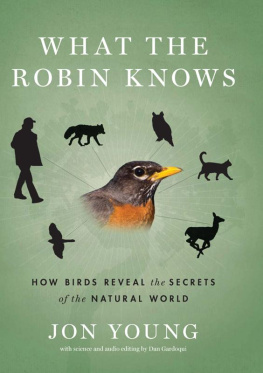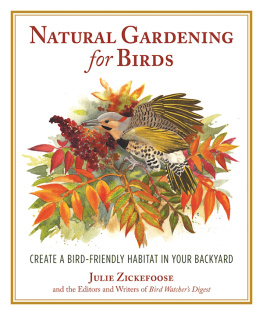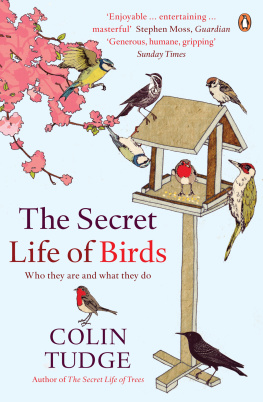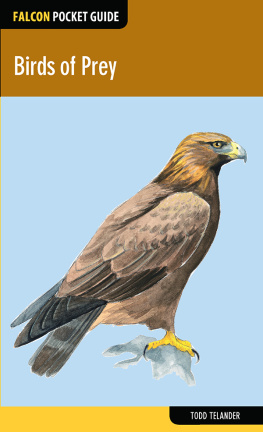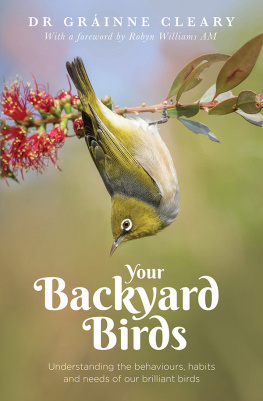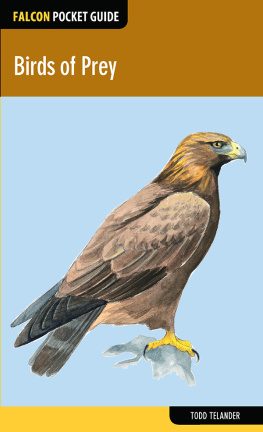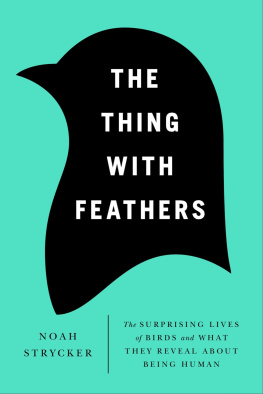Copyright 2012 by Jon Young
All rights reserved
For information about permission to reproduce selections from this book, write to Permissions, Houghton Mifflin Harcourt Company, 215 Park Avenue South, New York, New York 10003.
www.hmhbooks.com
Illustrations by Kiliii Fish Photo & Design
Library of Congress Cataloging-in-Publication Data
Young, Jon, date.
What the robin knows : how birds reveal the secrets of the natural world / Jon Young.
p. cm.
Includes bibliographical references and index.
ISBN 978-0-547-45125-1
1. Birdsongs. 2. SongbirdsBehavior. 3. Bird watching. 4. Nature observation. 5. Philosophy of nature. 6. Young, Jon, date.TravelNew Jersey. 7. Natural historyNew Jersey. I. Title.
QL 698.5. Y 68 2012
598.8dc23 2012002403
Printed in the United States of America
DOC 10 9 8 7 6 5 4 3 2 1
Dedication
There are teachers, mentors, elders, and wisdom keepers from every part of this world who have kept alive the ways of their traditional ecological knowledge. Through my relationships with these sources of wisdom, and through the lens of natural history science, I have come to offer this book. Through the hope, curiosity, and deep belief of those I have mentored, I have gained immeasurably. This book is sourced from their stories and their sit spot experiences.
Therefore I dedicate this work to both the ancestors of wisdom, indigenous and modern alike. And I dedicate this book to those who sit, watch, and wonderand ultimately share their stories and questions with others for further learning, reflection, and just plain excitement. These sources continue to build our collective understanding of bird and animal language.
To Tekaronianeken Jake Swamp, once a living friend, elder, and mentor, now an ancestor: you were the first man to tell me that it is good to give thanks to the birds, for they are the ones who lift us from our troubled minds.
To the children of the wind, who watch, listen, and share their stories and find the power of silence within.
Acknowledgments
First, let me acknowledge my mentors and ancestors, for without their support this book would not exist.
For the ancestors: Thanks especially to my beloved Aunt Carrie Rozek, the oldest sister of my grandmother Anna Ernishthanks to you as well. Aunt Carrie helped me to discover the mystery of nature, its silent teachings and the wisdom of the birds messages to us. Ingwe, my beloved grandfather and teacher, you taught me to believe in the messages of the birdsthrough you, Ingwe, to your Akamba teachers and mentors, and to the Bushman who showed you so much, so you could inspire me to go on learning and teaching bird language. Thanks to uncles Jake and Gilbert, who shared so generously the wisdom of your culture with me and deepened my understanding and appreciation of the birds and their language at a very deep level.
My living mentors and teachers: To my childhood mentor, Tom Brown Jr., many thanks to you always for what you have offered me and so many others. I could not be writing this book without your vast contribution to my growth as a naturalist, tracker, and bird language teacher. Thanks to the author Jim Corbett, who for many years offered me the only satisfying stories of bird language in print that I could find. Thanks to all the great birders, naturalists, and trackers out there who have provided so many incredible resources and opportunities to learn from.
There are too many people to acknowledge for their contributions to this book and to the source of knowledge, experience, and inspiration that allowed me to be part of the team to create this book. There are many supporters around the world who have contributed time, experience, words, and resources to support this project. To all of you a huge, heartfelt thank-you.
There are a few I have to mention directly. First, Bonnie Solow at Solow Literary, who drew this book from me after hearing me speak about this subject one evening in her town. Thank you, Bonnie. Thank you to Mark and Miki, who helped shape and refine the story from a massive source of words collected over ten years.
Thanks to the group of trackers, researchers, bird language enthusiasts, writers, artists, and other helpers who helped create that massive source of words that we worked from to create this book. That would be the team from OWLink Media and the Shikari Tracking Guild from the mid-1990s right through until 2009, when we began to focus and whittle away at this raw material on bird language and tracking. A special thanks to all of you who provided such important support in terms of facilities to work from, land with suitable habitatrich with birds and wildlifeand homes for us during this time, resources to support me and my family and members of this team, and belief in us to help us get the work done.
Great thanks to all of you who have worked directly on this book. Thanks to the writer Mike Bryan, who took the job of combing through nearly 200,000 words to find the ones that mattered most. Thanks to Kiliii Yu for your exceptional artistic talent as artist and graphic artist, and your skills and experience in bird language that helped so much in the rendering of the shapes of alarm.
Very special thanks to Dan Gardoqui, someone who I consider a friend, younger brother, and colleague. I began to mentor Dan in bird language and tracking when he was fifteen years old. That was in the mid-1980s. Dans enthusiasm, focus, passion to learn, and willingness to put in time in the field and in the research have carried him all the way to the top of his field. He is a talented, experienced, and exceptional teacher of tracking and bird language. He is a tireless and skilled researcherhis work included combing through every sentence in this book to find opportunities to link to modern science. He created all of the endnotes and every reference in these pages. Dan, for your work on this project over the last couple of years, and for the last twenty-five or so years of working together closely, thank you. Your hard work has provided an important bridge between worlds of powerful tools.
Dan worked with me and a great team gathered and led by Maureen McConnell, exhibit planner, while she presided over the development of A Birds World exhibit at Bostons Museum of Science natural history section. It was there that Dan worked with Lang Elliott, the exceptional field recordist and owner of NatureSound Studios, to first bring together the five voices of birds we write about in this book. Over the years many people have requested that Dan and I produce a bird vocalization collection organized by these five voices. Working closely again with Langs help and his recordings, Dan has produced the collection to accompany this book. Thanks to Dan and Lang (and to Maureen for this original opportunity).
Thanks to Josh Lane, experienced naturalist, tracker, bird language teacher, and mentor for the Shikari Tracking Guild for his contributions in shaping the appendix on learning bird language.
Special thanks to the team at Houghton Mifflin Harcourt, especially Lisa White, the editor for this work.
Thanks to my wife for supporting me on this journey and for contributing so much to the work of bird language herselfmentoring and teaching with me all these years. Thanks to those who have helped test, shape, and refine the methodologies in these pages: Dave Hage, Lauren Dalberth Hage, Will Scott, Dan Fontaine, Greg Sommer, Jennifer Bresse, James Stark, Penny Livingston Stark, Rafe Halsey, Ruby Head, Ned Conwell, Nathan Meffert, Calen Kennett, and all the other staff members, apprentices, students, and other folks who have worked year after year, week after week, and hour upon hour, to create the refined experience of learning bird language for many people over the years at the Regenerative Design Institute, the Shikari Tracking Guild, and 8 Shields Institute. Thanks to all the folks at Wilderness Awareness School, who continue to move this work forward as well.
Next page
